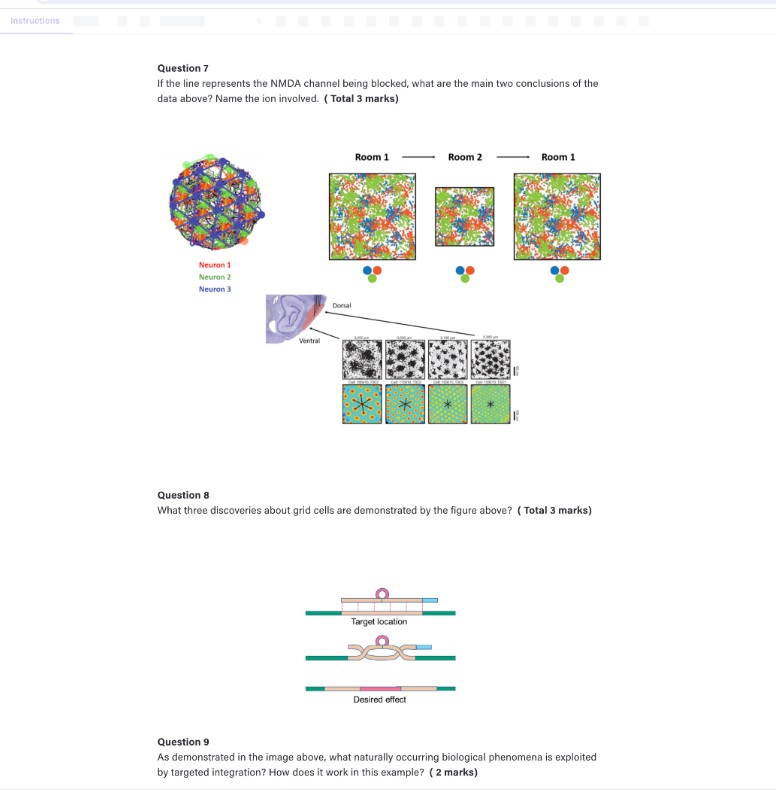Dr Joanna Riddoch-Contreras, in conversation with the DES, shares her experience using Cadmus with a second-year undergraduate module, as part of the current pilot.
Background
The Cadmus pilot focused on an undergraduate Year 2 module Cell and Molecular Neuroscience, with a cohort of 98 students across three different programmes; Biochemistry , Neuroscience, Pharmacology and Innovative Therapeutics. Assessments in Year 1 are predominately multiple-choice question exams, and there is little to no academic writing. BSc Neuroscience is designed with a spiral curriculum using a research-led teaching approach; scientific reading and writing is introduced in Year 1 and skills in critical thinking and writing in Years 2 and 3.
There’s been a shift in students’ approach to exams since the pandemic. Pre-pandemic assessments were mostly invigilated exams. We then moved to 24-hour take-home exams during the pandemic and now we have settled on 2-hour open book online exams. In last year’s NSS, the main comments in the free text sections were focused on assessments and the changes the student had experienced. Assessment cause students' great anxiety, as well as fear and worry about misconduct from students.
Assessment changes
With the pilot, we are trying to find a balance between meaningful, authentic assessment, validity and academic integrity. The pilot was a calculated risk, as it is 100% coursework. Assessment needs to be digital and needs to reflect the skills students will require. It also needs to be valid, with academic integrity being a requirement. I relied on my experience as a programme director and external examiner, borrowing best practice from other institutions including UCL and Imperial College London when re-designing this assessment for the pilot. Assessing at the right level, with authenticity, integrity, meeting best practice and student preferences were the drivers.
The former assessment pattern was a set of lab questions students answered on campus (25%), an essay (25%) and an exam (50%). With the pilot, we moved from the essay to the interpretation of a diagram, using Cadmus timed questions; we had some attainment issues due to low attendance with that assignment. The lab report was also conducted on Cadmus, and we found some aspects of collusion and outside help in students’ work. The most radical change was to move from a 2-hour, 1000-word exam to an authentic piece of academic writing assessment worth 50% of the grade. The coursework was in the style of a journalistic news report “News and Views article” based on a recent research paper. Students could choose between three papers which covered topics taught in the module (dopaminergic circuits in the brain, Mitochondria and energy consumption and synaptic transmission). We used Cadmus to scaffold and support the writing process and a Cadmus marking rubric. Students had twelve weeks to complete the assignment, and an option to submit a draft, which half the class did.

Diagram used in summative assessment
Final reflection
Student responses varied. Some loved it and thrived, and some found it difficult. For me, it was very hard to detect the use of generative AI in their writing despite the analytics that Cadmus offer.
The experience has been eye opening: before Cadmus, we were over assessing essay writing skills, without giving timely formative feedback. I believe I learned a lot about student's behavior, and I now question the timing of assessments, the value of formative and summative assessment and am striving to increase the number of authentic assessments.
I have had a positive experience using Cadmus and I am now using it with my final year undergraduates' students. Students love asynchronous activities if they are well prepared. They have readings and interactive campus sessions, but it is interesting to understand what value and why they come to campus, and what they can’t get from it, which they can get from asynchronous learning. Their experience is changing. We need to understand their contexts and lives: some share bedrooms, lack some resources and online assessment discriminates on this. Equity is key.
Students who engaged with Cadmus found it positive. There was little resistance to the platform. They found it well scaffolded and supported. Some really learned and engaged with the authentic assessment and now benefit from it in other modules, as they progress. Sometimes it is good to stretch students.